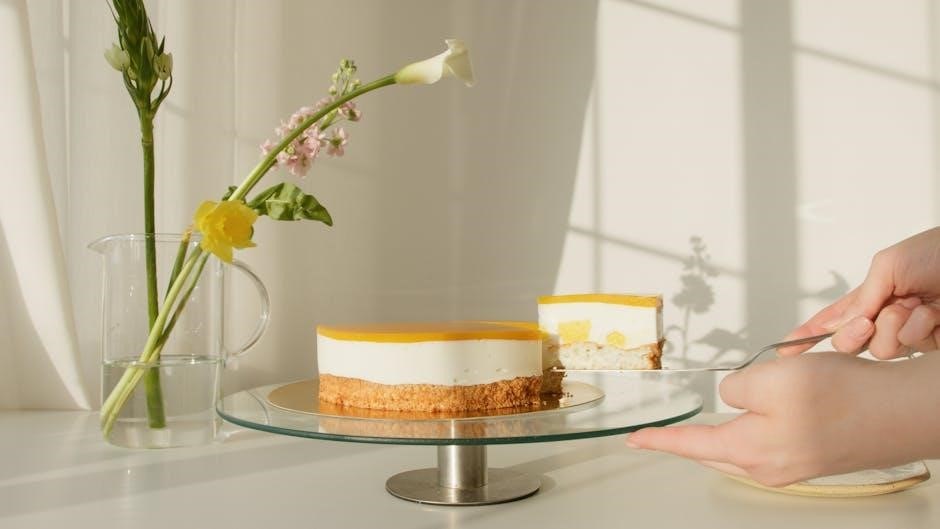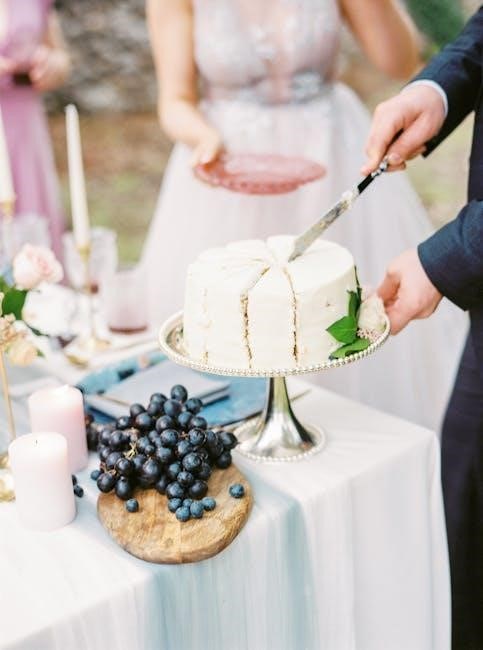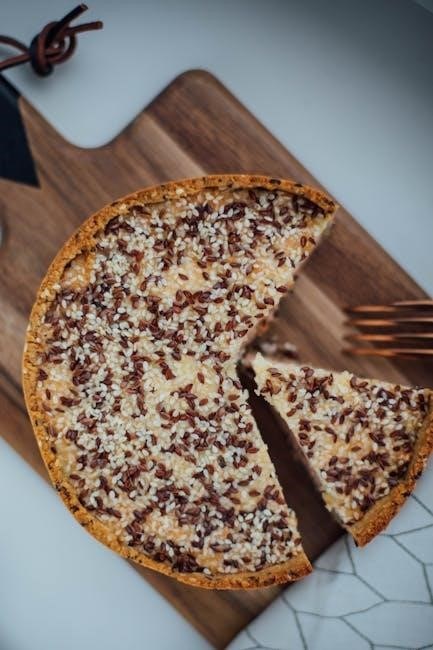9-Inch Round Cake Cutting Guide
Navigating the world of cake cutting can be tricky, especially when faced with a 9-inch round cake. This guide is designed to provide straightforward methods for portioning your cake perfectly, whether for a small family gathering or a larger celebration. Ensure everyone enjoys a slice!
The 9-inch round cake is a versatile dessert option, perfect for a variety of occasions ranging from intimate family dinners to more substantial gatherings. Understanding how to properly serve a 9-inch cake is crucial to ensure that each guest receives an adequate portion, and that the cake is utilized efficiently. This introduction will guide you through the basics of serving a 9-inch round cake, taking into account different serving sizes and methods. Whether you’re aiming for standard slices or event-sized portions, the key is to approach the task with a plan. Factors such as cake height and density play a role in determining serving sizes, so we’ll explore how these elements influence your cutting strategy. We’ll also touch upon the discrepancies found in cake serving charts from sources like Wilton and Earlenes Cakes, which offer varying recommendations on the number of servings a 9-inch cake can yield. By considering these factors, you can confidently tackle the task of serving your cake, ensuring that everyone enjoys a delightful slice.
Standard Serving Sizes for a 9-Inch Cake
When considering standard serving sizes for a 9-inch round cake, the general consensus is that it comfortably serves between 12 to 16 people. This estimation is based on cutting the cake into even slices, typically about 1 inch wide at the outer edge. A “standard” slice is often considered to be about 1/12th of the entire cake. This size is ideal for casual gatherings or family celebrations where a moderate portion is desired. However, it’s important to note that this is just a guideline. Individual preferences and the richness of the cake itself can influence how large or small you choose to make each slice. For instance, a denser, richer cake might warrant smaller servings, while a lighter, fluffier cake could justify slightly larger portions. To achieve these standard servings, you can cut the cake using a simple radial method, dividing it into equal wedges like you would a pie. This approach ensures that everyone receives a fair and visually appealing piece.
Cutting a 9-Inch Cake for 12-16 Servings
Achieving 12-16 servings from a 9-inch round cake is a common goal for many gatherings. One straightforward method involves cutting the cake into even wedges. Start by cutting the cake in half, then each half in half again, creating four equal quarters. Next, divide each quarter into either three or four slices, depending on whether you’re aiming for 12 or 16 servings, respectively. For 12 servings, each slice will be slightly larger, providing a generous portion. For 16 servings, the slices will be a bit smaller, suitable for those who prefer a lighter taste. Another method involves cutting a smaller circle in the center of the cake and then slicing outwards from the center circle to the edge, ensuring uniformity. Remember to use a long, sharp knife for clean cuts, and wipe the blade between slices to maintain a neat presentation. This approach ensures that each guest receives a visually appealing and equally sized piece of cake.

Event-Sized Slices: Serving Up to 30 People
When catering to a larger crowd of up to 30 people with a 9-inch round cake, the key is to create event-sized slices. This involves cutting smaller, more manageable portions that allow everyone to enjoy a taste without being overly full. Begin by cutting a smaller circle in the center of the cake. Then, slice outwards from this inner circle to the edge of the cake, creating thin, uniform pieces. This method maximizes the number of servings while maintaining a presentable appearance. Alternatively, you can cut the cake into a grid pattern, creating small square or rectangular pieces. This approach is particularly effective if the cake has multiple layers or a rich filling, as it ensures each slice contains a balanced combination of cake and filling. Remember to use a serrated knife for clean cuts and to wipe the blade between slices to prevent the frosting from smearing. These smaller portions are perfect for events where guests may want to sample other desserts or appetizers. This method allows you to stretch your cake further, ensuring everyone gets a taste!

The Party Method: Serving 24 Guests
For parties where a 9-inch cake needs to serve around 24 guests, the “party method” is an efficient way to ensure everyone gets a slice. This technique involves dividing the cake into smaller, more numerous portions without compromising on presentation. Start by cutting a smaller circle in the center, removing a round section. Then, divide the remaining ring into equal segments. Each segment can then be further divided into smaller, bite-sized pieces. This method creates uniform portions, perfect for a party setting where guests may prefer smaller servings, especially if there are other desserts available. Alternatively, you can cut the cake into a grid pattern, creating small squares or rectangles. This method is especially useful for layered cakes, as it ensures each piece contains a bit of each layer. When cutting, use a long, sharp knife and wipe the blade clean between each cut to maintain a neat appearance. This approach is ideal for casual gatherings, allowing guests to easily grab a piece and mingle. Remember, the goal is to provide a taste for everyone without excessive leftovers.
The Wedding-Style Method: Serving 32 Guests
The “wedding-style” method is a technique designed to maximize the number of servings from a 9-inch round cake, typically yielding around 32 portions. This approach is particularly useful for larger events where you want to ensure everyone gets a taste of the cake without needing an enormous cake. Start by cutting a small circle in the center of the cake. Then, cut concentric circles, creating rings of cake. Each ring is then divided into smaller, uniform slices. This method allows for efficient portioning and is ideal for layered cakes, as each slice will contain a bit of each layer.
For a neat presentation, use a long, sharp knife, and wipe the blade clean between cuts. Alternatively, consider using a cake divider tool, which helps create precise and even slices. Another approach involves cutting the cake into a grid pattern, creating small, bite-sized squares. This method is particularly effective for cakes with multiple layers, as it ensures each guest gets a portion of each layer.
Keep in mind that wedding-style servings are generally smaller, so this method works best when there are other desserts available or when guests are expected to have just a small taste. Accurate cutting is key to achieving the desired number of servings.
Factors Affecting Serving Size: Cake Height and Density

Several factors influence the appropriate serving size of a 9-inch round cake, primarily its height and density. A taller cake, typically with multiple layers, will naturally yield more servings compared to a flatter cake. Likewise, a denser cake, such as a pound cake, will be more filling, suggesting smaller slices are appropriate.
Consider a 9-inch cake that is 4 inches high. This cake will provide more substantial servings than a 9-inch cake that is only 2 inches high. Similarly, a rich chocolate cake requires smaller portions than a light sponge cake. The density of the cake batter and the ingredients used play a crucial role in determining the appropriate serving size. A cake with heavy buttercream frosting will also be more filling than one with a lighter whipped cream.
When planning your servings, think about the overall dessert offerings. If the cake is the main dessert, a larger slice is acceptable. However, if there are multiple desserts, smaller portions will suffice. Guest preferences should also be considered; some may prefer a larger piece, while others are content with a smaller taste; Ultimately, adjusting your cutting approach based on these factors ensures that everyone enjoys the cake without excessive waste or disappointment.
Cake Serving Charts: Wilton vs. Earlenes Cakes
When determining how many servings you can get from a 9-inch round cake, it’s essential to consult reliable cake serving charts. Two commonly referenced charts are those provided by Wilton and Earlenes Cakes. However, these charts sometimes offer conflicting information, creating confusion.
Wilton, a well-known name in baking, suggests that a two-layer 9-inch round cake can serve approximately 32 people. This assumes a standard wedding-style serving, where slices are cut into smaller, more numerous portions. Earlenes Cakes, on the other hand, estimates that a 9-inch round cake serves around 22 people. This discrepancy highlights the variability in serving sizes depending on the cutting method and the intended portion size.
The difference between the two charts stems from the slice dimensions each assumes. Wilton likely envisions thinner, taller slices, while Earlenes Cakes might suggest wider, shorter pieces. Consider the context of your event when choosing which chart to follow. For formal events where smaller portions are preferred, Wilton’s chart might be more appropriate. For casual gatherings, Earlenes Cakes’ estimate might provide a more generous serving size. Always adjust based on your guests’ preferences and the cake’s height and density.
Alternative Cutting Methods for a 9-Inch Cake
Beyond the standard wedge-shaped slices, several alternative cutting methods can maximize servings and add a touch of elegance to your presentation. One popular method involves cutting concentric circles within the cake. Start by cutting a smaller circle in the center, then gradually expand outwards, creating rings of cake. These rings can then be divided into smaller, uniform pieces, ensuring everyone receives a fair share.
Another approach is the grid method. Begin by cutting the cake into horizontal and vertical lines, forming a grid pattern. This method is particularly useful for serving a large group, as it allows for easy portion control and consistent slice sizes. For a more visually appealing presentation, consider using cookie cutters to create unique shapes from the cake. This is especially popular for children’s parties or themed events.
Finally, the “wedding style” cutting method, often used for larger gatherings, involves cutting the cake into long, thin slices. This maximizes the number of servings while still providing a satisfying portion. Remember to adjust your cutting technique based on the cake’s density and the number of guests to ensure a delightful experience for all.
Tips for Accurate Cake Portioning
Achieving accurate cake portioning is essential for ensuring everyone enjoys a fair share and minimizing waste. Start with a sharp, thin-bladed knife, preferably one that is slightly serrated. This will help you cut through the cake cleanly and evenly, without tearing or crumbling the layers. Before each cut, dip the knife in warm water and wipe it clean with a cloth. This will prevent the cake from sticking to the blade and ensure smooth, precise cuts.
Consider using a cake divider or template, especially if you’re aiming for a specific number of servings. These tools provide guidelines for cutting uniform slices, making the process much easier and more efficient. If you don’t have a cake divider, you can create your own by using a ruler and marking the desired slice widths on the cake’s surface with toothpicks.
For layered cakes, make sure to cut all the way through each layer in one smooth motion. Avoid sawing back and forth, as this can cause the layers to separate and the frosting to smear. Finally, when serving, use a cake server or spatula to gently lift each slice from the cake pan. This will help maintain the slice’s shape and prevent it from falling apart.


